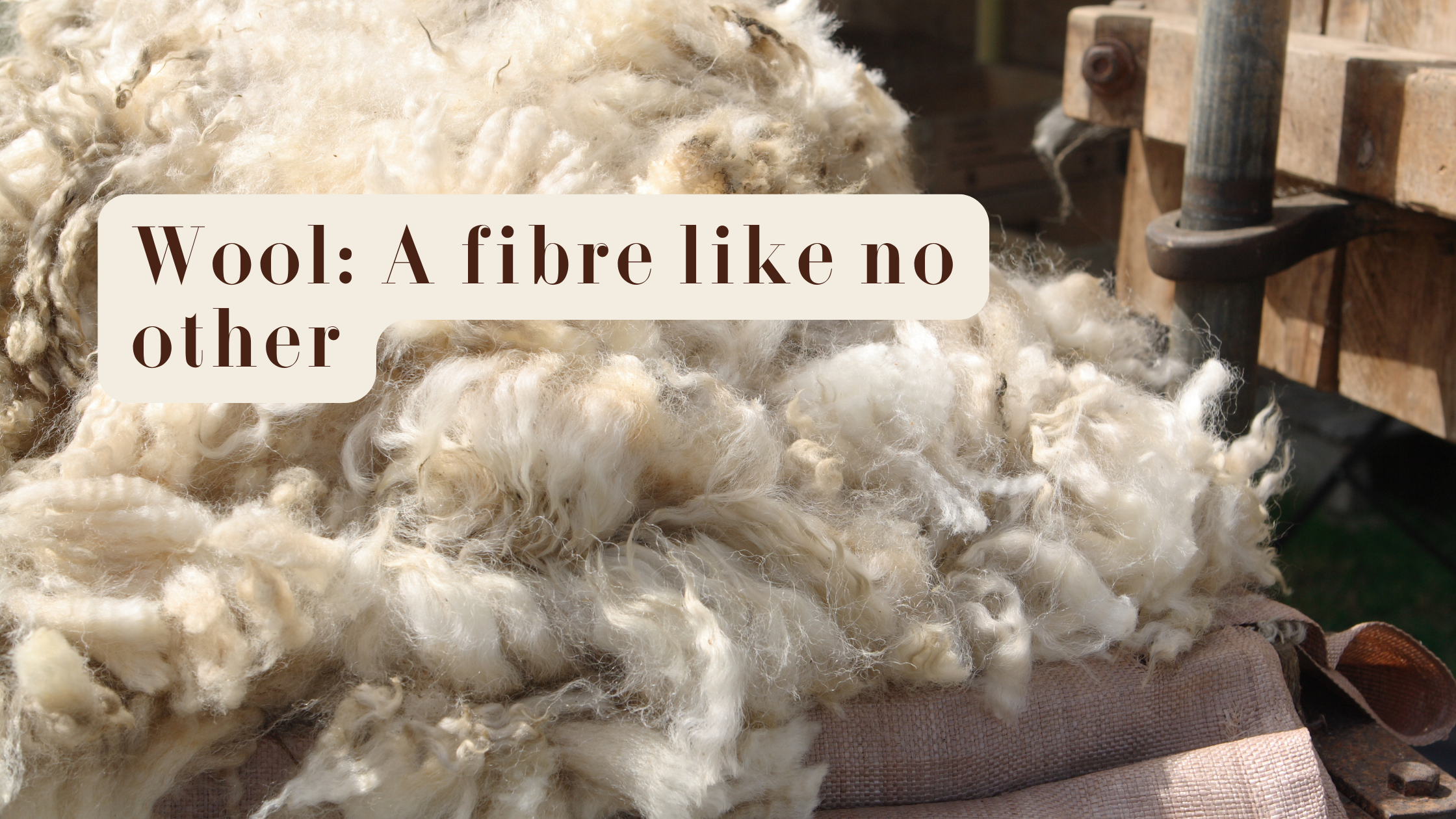Wool's Secrets: From Types to Science and Why It’s a Fiber Like No Other
Author: Kelly Wiles, the content specialist at Heavenly Himalayan, writes interesting content that shows off the unique and handmade parts of our brand. With multiple years of experience, she focuses on the cultural importance and craft quality of our beautiful accessories.
Have you ever wondered why wool is considered a miracle fiber?
The unique structure of wool fibers gives them ultimate strength and flexibility. How does wool keep you warm in winter? Wool has a natural crimp that traps air for insulation, and its fibers wick moisture away to regulate temperature. Why is wool durable and good for the environment? Wool breaks down naturally, can be renewed, and resists odors and stains, so it doesn't need to be washed often or with strong chemicals.
Stay connected with this informative content journey to explore the types of wool, the science behind it, and the importance of wool in fashion industry and beyond.
Know the Science Behind the Wool:
Why is Wool Clothing Warm and Lightweight?
Wool Clothing is warm but lightweight because it doesn't remove heat from your body. Wool is a poor conductor of heat, so it keeps your body heat in. Unlike a skillet that conducts heat from a stove, wool doesn't absorb the heat your body produces in the cold, keeping you warm instead of your clothes.
Wool's Insulating Power:
Wool fabric has been known for over 10,000 years as a great insulator. The special structure of wool fibers, with natural kinks and bends, traps air to keep your body warm. Because of its excellent heat-trapping abilities, wool is even used to insulate homes and buildings sustainably.
Does Merino Wool Really Generate Heat?
Yes, merino wool can generate heat. When wet, its porous fibers trap water, breaking hydrogen bonds and creating heat. One kilogram of merino wool can produce as much heat over eight hours as an electric blanket.
How Does Wool Handle Water So Well?
Wool excels at handling water by adsorbing moisture, meaning water molecules are trapped in the fibers rather than making the fabric feel wet. This keeps the garment feeling relatively dry against the skin even when soaked.
What Happens to the Moisture in Wool?
Wool generates heat as water condenses inside its fibers and releases moisture into the air as vapor. Due to wool's structure and properties, this process keeps garments dry and comfortable by pulling moisture away from the skin and allowing it to evaporate quickly.
How Fire-Resistant is Wool?
It resists flames and self-extinguishes because it requires a lot of oxygen to burn, which isn't usually available. Wool ignites only at high temperatures, around 570-600°C.
When exposed to strong fire, wool smolders briefly and doesn't spread flames. Unlike synthetic fabrics, wool won't melt, drip, or stick to the skin. It also doesn't release toxic gases or produce much smoke. These safety traits come from wool's 100% natural proteins.
Exploring Different Types of Wool
In this part, we'll explore different types of wool and their unique qualities. From silky alpaca wool to warm camel hair and soft merino wool, understanding these differences will help you choose the best wool for your needs. Let's see what makes each type special and how it is used.
Sheep Wool:
Sheep stay warm in cold weather thanks to their wool. Sheep wool has fibers that trap tiny air pockets, creating an insulating layer that keeps them warm and dry. This makes sheep wool great for keeping people and homes warm, too. It's a popular type of wool fabric.
Worsted Wool:
Worsted wool is one of the priciest kinds because it is high-quality. Made from sheep's wool, it is stronger and more versatile than other types of wool.
Alpaca Wool:
Alpaca wool is a medium-weight wool used for making coats, blankets, linings for outerwear, and bedspreads. It comes from two types of alpacas: Suri, which has a silky feel, and Huacaya, which is thicker. Suri wool is good for woven fabrics, while Huacaya is better for knit fabrics.
Camel Hair Wool:
Camel hair wool is known for its warmth and natural golden brown color. When mixed with cheaper wool types, it becomes softer and more affordable. Camel hair became popular for coats in the 1920s, especially among polo players. Today, it is still used for making coats and other clothing.
Merino Wool:
Merino wool comes from merino sheep in Spain, Australia, and New Zealand. This wool is very soft and helps regulate body temperature well. It is a popular choice for its softness and luxurious look. Merino wool makes up 1% of the world's fiber for clothing and is often used for stylish bedding and clothes.
Why is Wool a Fiber Like No Other?
Wool is a remarkable fiber due to its unique properties, making it versatile and practical. Unlike many other materials, wool offers natural benefits that enhance comfort and functionality. Here’s why wool is a fiber-like no other:
❖ Natural Insulation: Wool fibers trap air, providing excellent insulation that keeps you warm in winter and cool in summer.
❖ Moisture-Wicking: Wool absorbs moisture away from the skin, helping to regulate body temperature and keep you dry.
❖ Fire-Resistant: Wool is naturally fire-resistant and self-extinguishing, reducing the risk of flames spreading and minimizing smoke.
❖ Durability: Wool fibers are strong and flexible, making them resistant to wear and tear and extending the life of woolen items.
❖ Eco-Friendly: Wool is biodegradable and renewable, making it more sustainable than synthetic fibers.
❖ Low Maintenance: Wool is naturally resistant to stains and odors, reducing the need for frequent washing and harsh cleaning products.
FAQs about Wool:
Q 1. Why wool is considered a miracle fiber?
Ans. Wool is a miracle fiber due to its crimped structure, strength, flexibility, and natural insulation. It traps air, wicks moisture, and resists fire.
Q 2. How does wool keep you warm in winter?
Ans. Wool keeps you warm by trapping air in crimped fibers, insulating and retaining body heat. It also wicks moisture away, effectively regulating body temperature.
Q 3. Does Merino wool generate heat?
Ans. Merino wool generates heat by trapping water and breaking down hydrogen bonds in its porous fibers. One kilogram of Merino wool can produce as much heat as an electric blanket over eight hours.
Q 4. What are the benefits of using Heavenly Himalayan wool products?
Ans. Heavenly Himalayan wool products provide exceptional warmth and softness with natural insulation and moisture-wicking. Their eco-friendly, biodegradable, and renewable wool supports sustainable practices and minimizes environmental impact.
Q 5. How does wool handle moisture compared to other fabrics?
Ans. Wool manages moisture by absorbing water into its fibers without feeling wet, keeping the garment dry and comfortable. Unlike other fabrics, which can become heavy, wool generates heat as moisture condenses.
Wool is a special and flexible fiber that works well for many uses. It keeps you warm, wicks away moisture, and resists fire. Wool is also strong and good for the environment. Heavenly Himalayan makes this even better with their high-quality wool products, providing extra warmth, softness, and eco-friendliness. Choose Heavenly Himalayan for cozy and stylish wool that lasts, including their quality handmade headbands.
Elevate your winter style. Don't wait—shop our handmade woolen headbands now!
Thank you for reading!
For more detail contact us👇:
📞 Phone: +1 (201) 254 5242
📧 Email: ellie@heavenlyhimalayan.com
🌐 Web: https://www.heavenlyhimalayan.com/
----------------------------------------------------------------------------------------------------




